Astronomy
Explore Astronomy
Latest about Astronomy
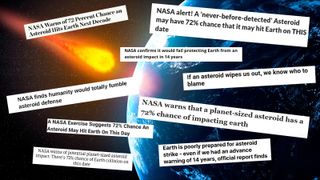
No, NASA hasn't warned of an impending asteroid strike in 2038. Here's what really happened.
By Harry Baker published
Experts from NASA and other international organizations recently simulated their response to a hypothetical asteroid impact scenario. The test was deemed a success. However, several media outlets have misreported the group's findings.
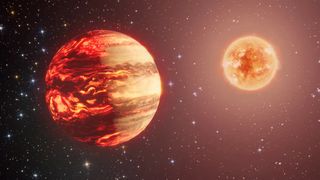
Gaia space telescope helps astronomers image hidden objects around bright stars
By Robert Lea published
The Gaia space telescope has spotted the dim companions of eight bright stars, suggesting we can expect new glimpses of distant planets.

'The early universe is nothing like we expected': James Webb telescope reveals 'new understanding' of how galaxies formed at cosmic dawn
By Ben Turner published
Astronomers using the James Webb Space Telescope have observed five extremely dense proto-globular clusters along a hair-thin arc of glittering stars. The discovery could help them understand how the earliest galaxies formed.
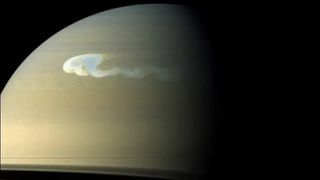
Saturn's planet-wide storms driven by seasonal heating, Cassini probe reveals
By Sharmila Kuthunur published
Saturn pumps into space varying amounts of heat based on its seasons, which drives planet-wide storms, data from NASA's Cassini mission has revealed.
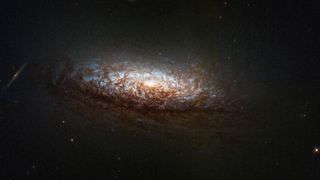
Space photo of the week: Hubble roars back to life with exquisite image of nearby galaxy
By Jamie Carter published
The sparkling galaxy NGC 1546 stars in Hubble's first new image since changing to its new "one-gyro mode," ending the telescope's roughly month-long break.

Is Jupiter's Great Red Spot an impostor? Giant storm may not be the original one discovered 350 years ago
By Stefanie Waldek published
Astronomer Giovanni Cassini observed Jupiter's 'Permanent Spot' in 1665, but new research suggests it's a different vortex from today's Great Red Spot.
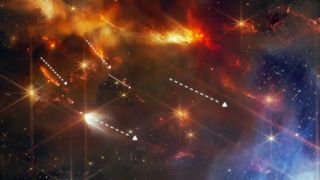
James Webb telescope spots a dozen newborn stars spewing gas in the same direction — and nobody is sure why
By Brandon Specktor published
The James Webb telescope has spotted a peculiar group of baby stars firing enormous jets into space at nearly the exact same angle. The discovery could hold new insights into how stars are born.

The unexpected behavior of pulsing stars could help us measure the universe
By Samantha Mathewson published
New research offers the most precise measurements yet of pulsating Cepheid stars, which could reveal new clues about the immense size and scale of our universe.

A 'new star' will appear in the sky any night now. Here's how to watch the Blaze Star ignite.
By Jamie Carter last updated
The "Blaze Star" T Coronae Borealis is expected to erupt with a magnificent explosion sometime between now and September, becoming visible to the naked eye. Here's how to find it when it does.
Sign up for the Live Science daily newsletter now
Get the world’s most fascinating discoveries delivered straight to your inbox.

